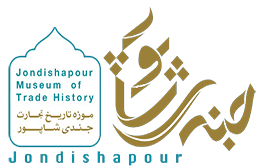Scientific investigations on the history of glass indicate that the early men living near the volcanoes discovered the raw material of the glass at locations where the molten rocks went cold swiftly. Using the glass, they embarked on making sharp items such as arrows, knife blades, and other practical tools. They finally got engaged in creating decorated items of glass. Looking at the history of glass working, one could identify three historical periods in terms of formulation and raw materials used for soda-lime-silica glass as follows:
- Since the discovery of glass till 800 B.C.: During this period almost all the glass found in Iran and other countries were soda-lime-silica glass extracted from plant ashes.
- 800 B.C.- 800 A.D.: They used natron fluxes in Europe, West Asia and Mesopotamia whereas soda extracted from plant ashes was used in Iran and some other countries.
- After 800 A.D.: In Europe, the potassium-based glass replaced the previous type while in countries such as Iraq, Syria and Turkey they returned to soda extracted from plant ashes.
According to historical evidences, glassmaking origins should be searched for in Mesopotamia where probably pebble and alkaline existed next to each other. Peoples living there and surrounding civilizations had the first experiences of melting the glass. Civilizations of Egypt, Syria and Mesopotamia were at the center of this competition whereby Alexandria in Egypt, Damascus in Syria and Ninawa in Mesopotamia turned into the hubs of glassmaking of this historical trend in the ancient age. Together with this trend, the glassmaking industry of Babylon, Sumer and Assyria developed. Some of the first glassware found in Iran include cylinder seals discovered during excavations in Tchoga Zanbil in Khuzestan.

